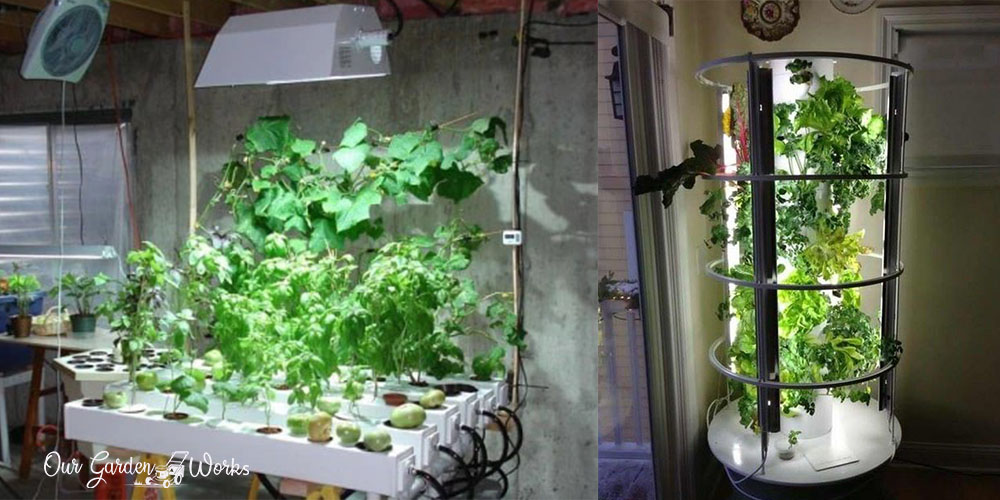Learning how to build a grow room in a garage is one of the easiest ways to continue growing plants amid a space problem and cold seasons.
Urban gardening has paved the way for most gardeners to continue growing plants for sustainability. As long as you have a heart of a plant parent, you can also turn your empty and dull garage into a room full of greenery and food.
In this post, we will share a general guide on how to build a grow room in a garage to help you quench your thirst for gardening through the winter season.
Grow rooms and greenhouses mimic the ideal growing environment for plants. So, your grow room setup will be heavily dependent on the varieties of plants that you will grow.
(You could use the table of contents below to jump to the sections that are most important to you.)
6 Factors To Consider in Building a Grow Room in Your Garage
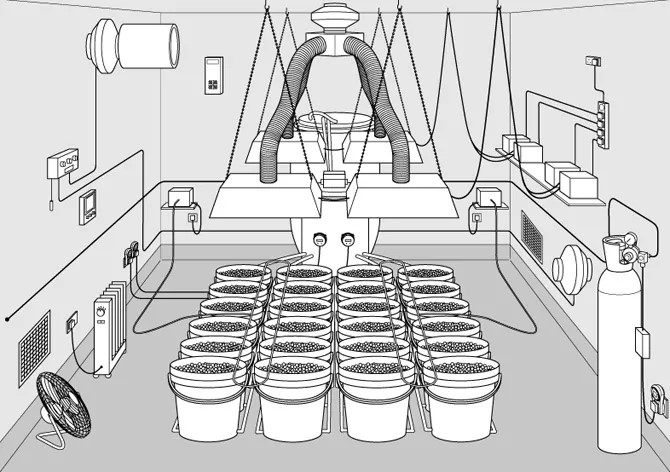
Now, let’s get into the first thing that you should consider in finding the best spot for your grow room.
Your garage must have the resources needed to supply the needs of your plants. Otherwise, you’ll be wasting your time and effort. Check out the following factors to consider before you build your grow room:
Ventilation, Humidity, and Temperature Control
Does your garage have enough airflow to sustain proper ventilation for your grow room?
If your garage lacks any windows or exhaust system, it can be hard to set up manual temperature and ventilation controls for your grow room.
One of the common unforeseen problems in growing rooms is the chance of having condensation due to the irregularities in the room temperature and humidity levels.
When condensation occurs, moisture can get in some parts of your grow rooms which can be a breeding ground of molds and mildew.
A telltale sign that there is not enough temperature control and ventilation for your plants is when you see droplets of water on the leaves. Relative humidity and temperature are relative in causing condensation.
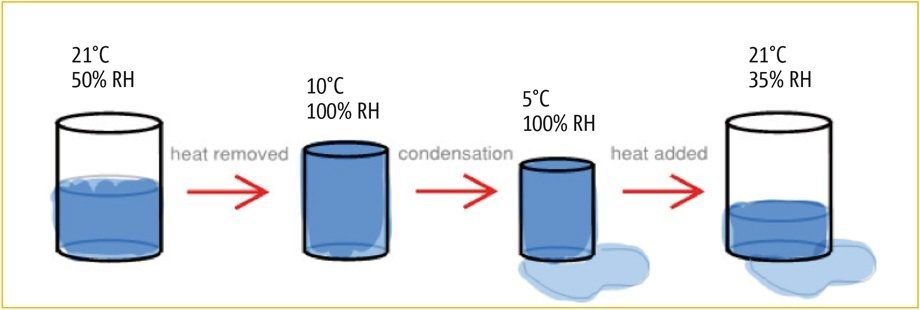
The relative humidity is the amount of water moisture or water vapor in the air. Low temperatures can add more moisture to the air. Once it meets a wave of heat or warm air in a grow room, condensation will occur and moisture turns into droplets of water.
When condensation happens in a grow room, microorganisms, fungus, and bacteria can develop and affect your plants.
The key to managing room temperature is to have enough balance between heat and cold temperatures and maintain 50% relative humidity or moisture in the air.
Temperature impacts the transition of plants through their growing cycle. Here are some of the recommended temperature controls for every stage of plant growth:
Seeding stage
- 74 F-75 F (23 C) Temperature & 75%-85% Relative Humidity (RH)
- The room can hold more moisture since there are still no roots that can help hydrate seedlings.
- Warm-season plants thrive in this range of temperature while cool-season varieties can germinate from 65 F to 68 F.
Vegetation stage (Leaf or foliar growth phase)
- 70 F-78 F (21 C-25 C) Temperature & 45%-55% Relative Humidity (RH)
- Plants have more roots to get moisture from the soil and grow more leaves.
Flowering stage
- 68 F-75 F (20 C-23 C) Temperature & 35%-45% Relative Humidity (RH)
- Light and temperature adjustments are also a technique that most gardeners and horticulturists use to manipulate the flowering stage of plants.
- Cool-season plant varieties start to bloom in a warmer environment while warm-season plants bloom well in colder environments.
Flowering stage
- 68 F-75 F (20 C-23 C) Temperature & 35%-45% Relative Humidity (RH)
- Light and temperature adjustments are also a technique that most gardeners and horticulturists use to manipulate the flowering stage of plants.
- Cool-season plant varieties start to bloom in a warmer environment while warm-season plants bloom well in colder environments.
Hardening, crop development & harvest stage
- 65 F-74 F (20 C-23 C) Temperature & 30%-40% Relative Humidity (RH)
- Low temperature triggers the slowdown of plant energy consumption and increases in sugar production.
Dehumidifiers, vent, and exhaust systems help maintain the right amount of relative humidity and temperature in a grow room. Dehumidifiers, in particular, heat the humid air at a certain level and remove excess moisture in the air that can cause damage to human health, plant health, furniture, and metal equipment.
If your garage has no windows or any ventilation system, you may install a specific air and temperature control in the grow room using the following equipment:
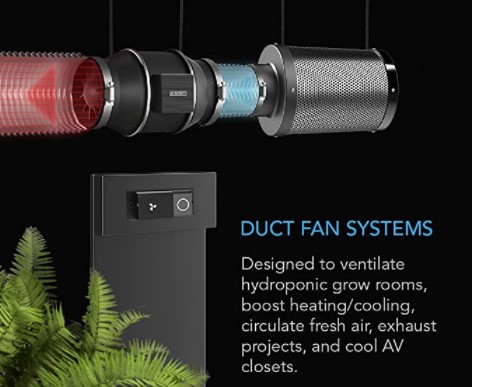
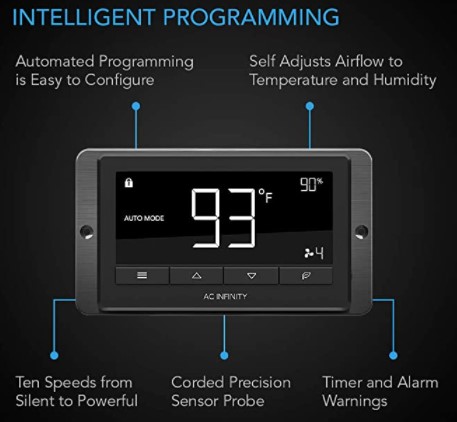
(2) AC Infinity CLOUDLINE T4, Quiet 4” Inline Duct Fan with Temperature Humidity Controller
Light Source
Aside from airflow, having a window in your garage can give you a cost-effective source of light. However, windows come with a set of pros and cons.
The biggest thing that you have to deal with having windows is the chances of condensation since they may come uninsulated. However, temperature control can always be adjusted to get the best benefits from free and natural light.
If you don’t have any windows in your garage, you may set up grow lights around your plants. There are several designs that you can try depending on the variety of plants that you plan to grow.
Here are some setup designs to pump up your creative and horticultural juices:
Shelf-type grow light design

Plant bed grow light
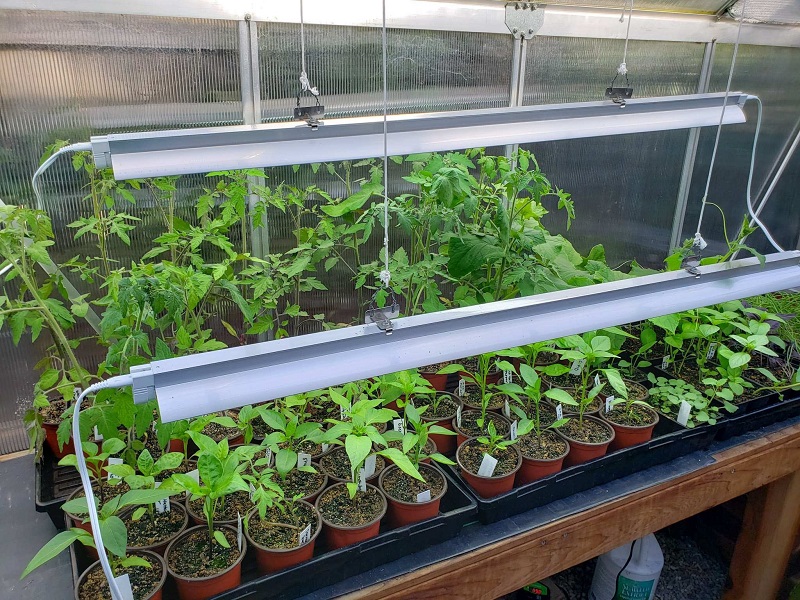
Hanging grow lights
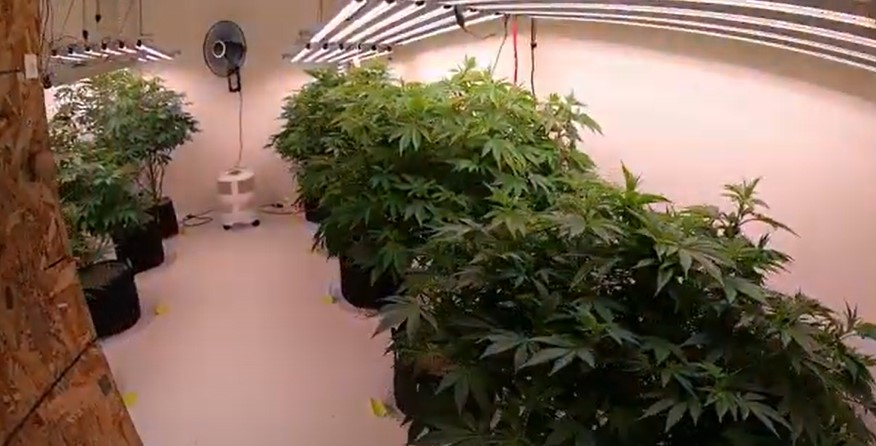
Vertical grow pods
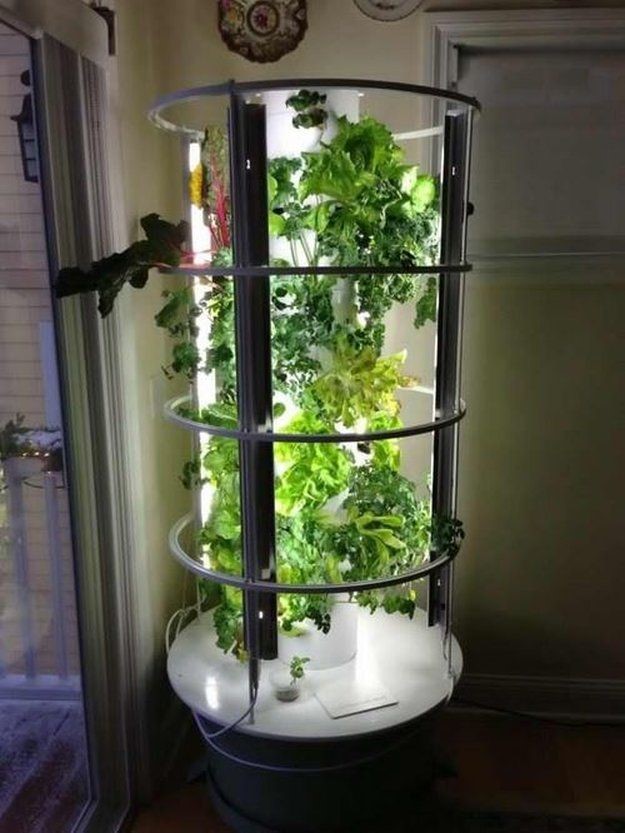
Electricity
The demand of energy that you will need for your garage grow room depends on the setup that you are planning to build.
A hydroponics growing system may need to power up several pumps to keep the water flowing for your plants. Grow lights, exhaust fans, and control systems are also other energy consumers that you need to consider.
The electrical load can be too much for one electrical outlet to handle. If possible, add new outlets to distribute the electrical load properly. Otherwise, there can be a fire risk or electric overload that may occur when you’re not around.
Some gardeners invest in a solar system to power up simple appliances like exhaust fans and lights. We made a simple guide on how you can use solar panels to power up a greenhouse/grow room.
Drainage
Watering your plants will definitely cause a few drops to spill on the floor. You may have a plate to catch the excess water or designate a drainage hole so the water will automatically go to the drain.
If you’re building a contained room using wooden materials, moisture may damage the walls over time.
So, make sure that you paint or waterproof it before you set up your plants. The presence of moisture is a big deal in grow rooms. So, you may want to set up a system that can help you automate the watering schedule of your plants.
Here are some options:
(1) A flood and drain system is an automated watering system common to stacked growing pods or raised plant beds.
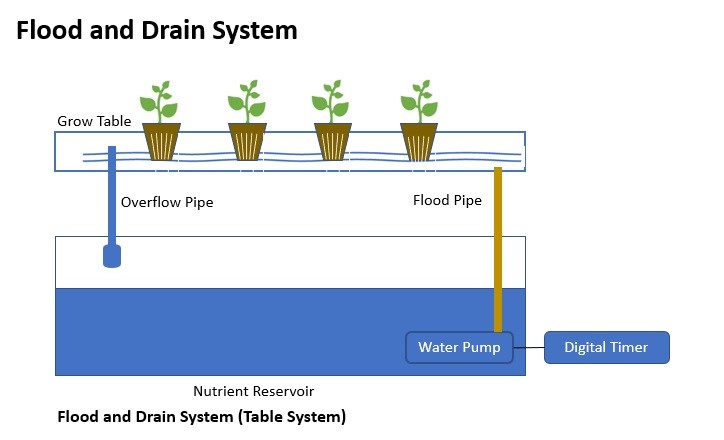
The concept of this system is to submerge the pots of plants in a large tray where a pump from a water reservoir will continue to water the plants.
The tray comes with a height-adjusted drain pipe to help control the water level and drain the excess water back to the reservoir. It is a self-sufficient system that you can automate and leave to do other tasks. You only need to replace the water from the reservoir from time to time.
(2) A drip system is also another option for indoor plant irrigation. It also has a water reservoir and a tray where all the drainage holes of the pots lead back to the reservoir.
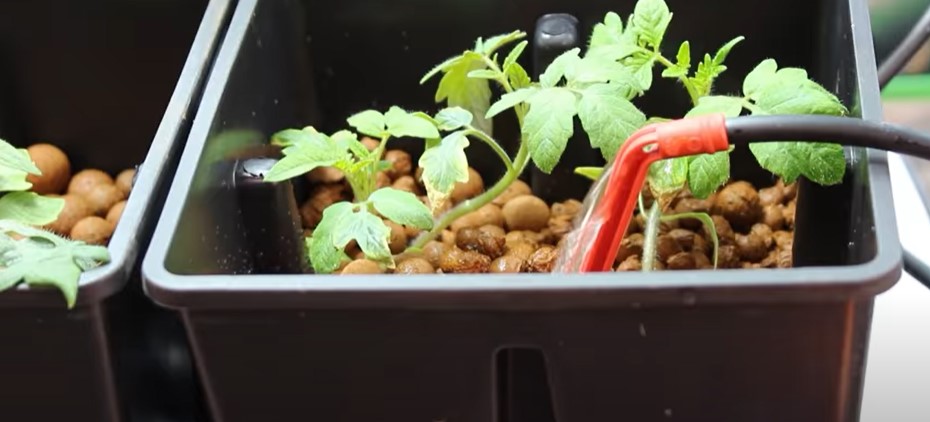
There’s a pump below the tray which pumps water on each pot using tubes with spikes. Unlike flood and drain systems, the plants are watered from top to bottom.
Type of Plants
The type of plants that you plan to grow is the foundation of learning how to build a grow room. The ideal growing environment of the plant of your choice dictates the following systems in your grow room:
- Overall growing structure and setup
- Irrigation system
- Ventilation, humidity, and temperature controls
- Drainage system
Warm-season plants, cool-season plants, and hydroponics all have different temperature needs and growing mediums.
So, before you plan on building your grow room, make sure that you have already decided on the plants that you’ll grow. Otherwise, you might end up wasting the energy and resources you spent on your garage project.
Growing Method
The next thing to decide after the plant varieties is the growing method that you want.
Today, some gardeners can already grow lettuce and other plants in a hydroponic environment. Your growing setup will dictate your overall grow room design.
Here are some examples of garage grow room setups:
(1) Growing tent with suspended grow lights and manual watering system. The ventilation is provided through a fan and a hole in the tent for the exhaust system.
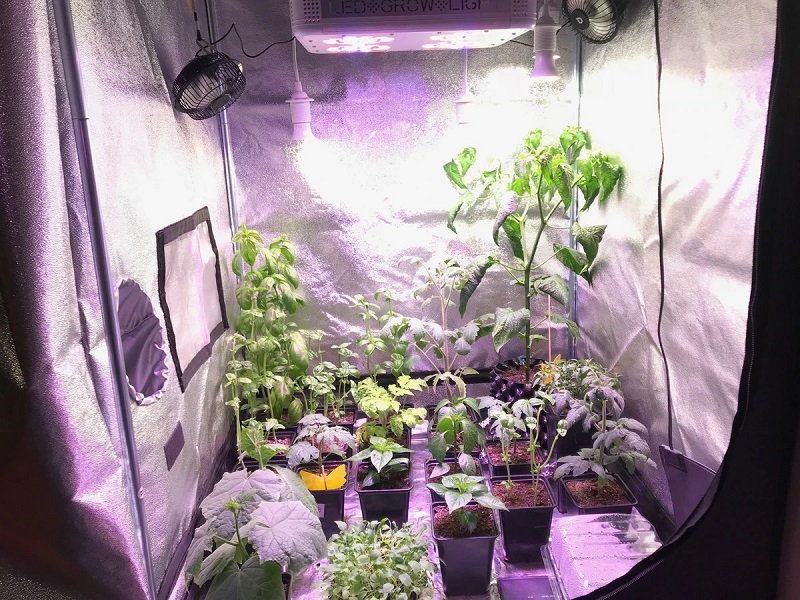
(2) Indoor hydroponics system where the pipes are layered in shelves or laid flat on a table. The robes are connected to a central reservoir where the pump is located.
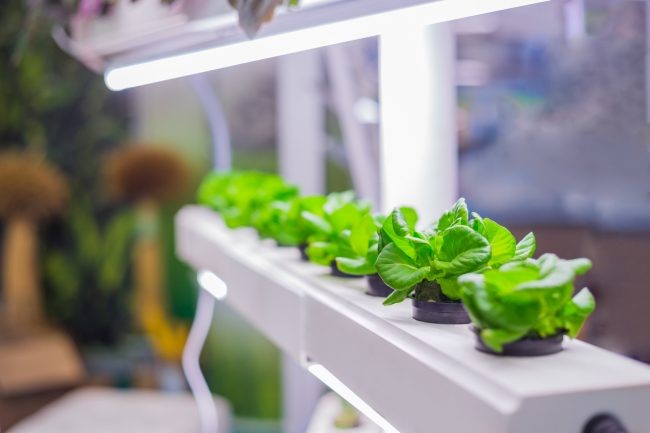
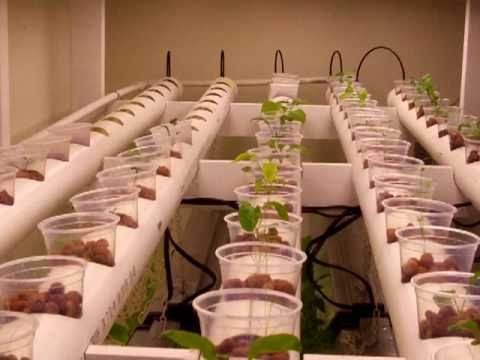
The lighting is also placed under the shelves or in a suspended lighting setup.
How To Build a Basic Garage Grow Room Setup [Step-By-Step]
Now that you have an idea of what things to consider in building a grow room, here is the basic step by step process:
#1 Decide Which Plant To Grow and Your Growing Medium
Warm and cold-season plants have varying temperature requirements. So, it should be the first thing that you should decide. Your growing medium is also the determining factor for your whole setup.
#2 Look For An Ideal Location in Your Garage
Identify which part of your garage has better access to the electrical outlets, natural light, and water source. Having these things in mind will help ease the building process.
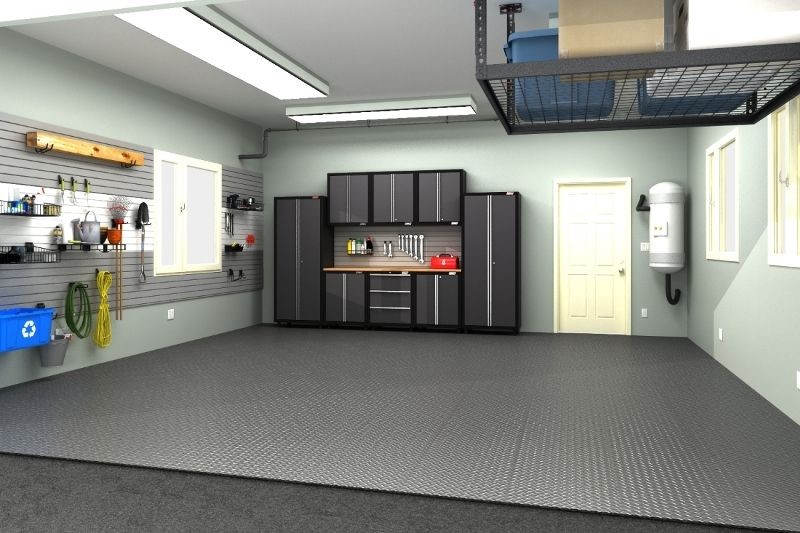
#3 Design The Floor Plan Based on Your Growing Medium and Grow Room Setup
Now, for the technical part, you need to have a visual of what you plan to build in your garage.
Some gardeners create an enclosed wooden room for their grow room where they can control the growing environment. In growing small batches of plants, growing tents are also efficient for some people.
In designing your floor plan, you may use SketchUp or any of the following software below:
#4 Start Building The Structure and Walls
The first thing to build in a growing room is the structure. If you’re planning to build a room out of wood, you can begin the framing. However, if you choose a more affordable setup, here are some options:
If you want to start small without changing or renovating so much in your garage, you may buy a complete grow kit. Check out these options:
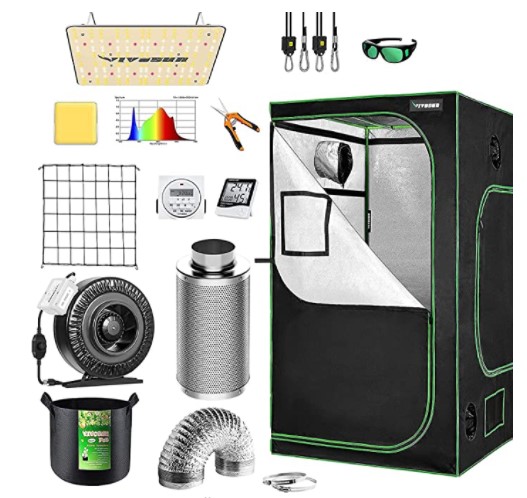
- VIVOSUN Grow Tent Complete System, 4×4 Ft. Growing Tent Kit Complete with VS1000 Led Grow Light 6 Inch 440CFM Inline Fan Carbon Filter and 8ft Ducting Combo, 48″x48″x80″
- VIVOSUN Grow Tent Complete System, 2-in-1 4×3 Ft. Grow Tent Kit Complete with VS1000 Led Grow Light, 4 Inch 203 CFM Inline Fan, Carbon Filter, 8ft Ducting Combo and 2FT T5 Grow Light Fixture
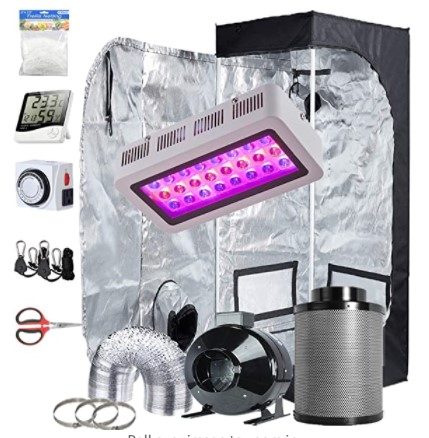
#5 Insulate The Room
To save on energy costs and maintain consistent temperature and humidity, insulating your grow room is crucial.
You may use any of the following options:
- Fiberglass
- Foamboard
- Spray foam
#6 Set Up The Grow Lights
Start with the grow lights because it designates the location of the plants. Plus, it also helps you seamlessly organize the electrical wires on the walls.
If you want to use suspended grow lights, you may need to drill some holes or set up some metal bars to hang them. Another benefit is to help light up the room and make it easier for you to move around.
#7 Install HVAC and Temperature Controls
The placement of the exhaust is strategically placed because warm air always goes higher in a grow room.
The fans should also be at a level around plants to help retain the right blend of relative humidity and temperature. New sets of HVAC today have automation options that make growing easier for you.
#8 Setup The Growing Medium (Hydroponic, Containers, Raised beds) and Drainage System
Usually, the drainage system is closely placed to the growing medium. So, you have to set it up as soon as you place the plant beds or racks.
The location of the reservoir should be in a place where there would be less movement or near a drainage hole.
#9 Place a Storage and Prep Area
Place a designated prep area in your grow room so you won’t have to go in and out just to get things done. It should be near the door to avoid dragging any tube or wire around when you move in some supplies.
#10 Start Growing Your Plants in Their Desired Locations
Test the lights, HVAC, and water system before you place your plants. It should be at the desired growing humidity and temperature of your plants to prevent them from experiencing sudden plant shock.
Final Thoughts
Learning how to build a grow room in your garage may require a lot of investment in your time, effort, and resources. However, once you have started growing some plants or even vegetables, you will immensely feel some fulfillment.
We hope that this post has given you some great ideas for your grow room. If you find it very informative, please don’t forget to share it with your friends.
Let us know in the comments which growing method works best in your grow room. We’re excited to hear from you about it!
